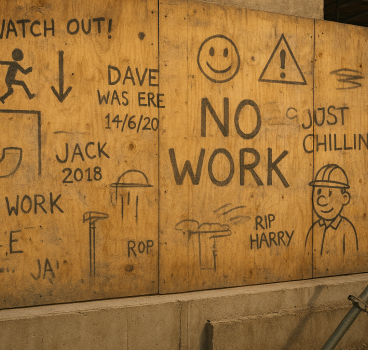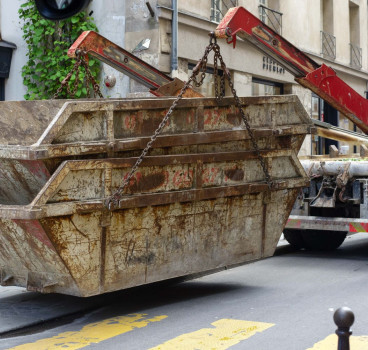Why our early builders hid shoes as they worked
For many homeowners and renovators of historic properties, finding a single, worn-out shoe tucked away in a dusty void, is a surprisingly common occurrence. From the stately manors of the landed gentry, to the modest cottages of labourers, the practice of concealing shoes within the fabric of a building was a widespread, deeply ingrained ritual, particularly prevalent during the 1700s and well into the 19th century. Far from being lost items or accidental inclusions, these shoes represent a fascinating glimpse into the superstitious beliefs and protective magic that once permeated daily life, transforming a building into a spiritually guarded sanctuary.
These concealed shoes are typically found in specific locations inside chimneys, hidden behind plaster in walls, tucked under floorboards, or secreted away near doorways and windows - liminal spaces believed to be vulnerable to unwelcome intrusions. What makes these discoveries particularly intriguing is their consistent nature. They are almost always single shoes, not pairs and often show significant signs of wear, suggesting they belonged to the occupant, having absorbed their personal essence. The reasons for their placement are rooted in a complex tapestry of folk beliefs and apotropaic magic, practices intended to ward off evil.
At the core of this peculiar custom was the pervasive belief in the supernatural and the constant threat posed by malevolent spirits, witches and misfortune. In an era before modern medicine and scientific understanding provided answers to life's unpredictable hardships, people sought protection through ritual and charm. The concealed shoe was believed to act as a powerful guardian.
One prominent theory suggests the shoe served as a "decoy" or "effigy." Spirits, drawn to the human scent and the personal connection embedded in a worn shoe, would be lured into the confines of the wall or chimney, where they would then become trapped, unable to enter the living spaces of the home. It was a form of spiritual perimeter defence, binding malevolent entities to the shoe and preventing them from harming the inhabitants.
Another facet of this protective magic involved the shoe’s ability to "scare away" evil. Just as an unexpected noise or sudden movement might startle an intruder, the hidden shoe, imbued with a lingering human presence, might be perceived by unseen forces as an active sentinel, deterring their entry. The specific location, particularly chimneys - seen as both a vital opening for warmth and a potential ingress point for spirits (especially witches thought to enter via chimneys) - further underscores this protective intent. Placing a shoe in such a vulnerable spot was a direct attempt to seal or guard the gateway against unwelcome spiritual visitors.
While protection was the dominant motive, other, less common theories suggest additional layers of meaning. Some scholars propose that the shoes might have been a form of offering for good fortune or even fertility, particularly if children's shoes were found, though evidence for this is less robust than for the apotropaic function. Regardless of the exact nuance, the common thread was an attempt to influence destiny, to secure the well-being of the inhabitants and their home through a ritualistic act of concealment. The very act of placing something personal, something worn and connected to daily life, deep within the building fabric, created a powerful, invisible bond between the occupant and the protective magic.
This practice was not unique to shoes. Historical and archaeological research has uncovered a fascinating array of other "concealed objects" within old buildings. These include "witch bottles" (glass bottles filled with various items like urine, pins, and hair, intended to repel evil spells), dried cats (believed to frighten away rodents and provide general luck) and various charms or religious artefacts.
All these items speak to a widespread reliance on folk magic and superstition that permeated society, from the lowest peasant to the highest noble, influencing architectural practices in subtle yet profound ways. Builders, far from being immune to these beliefs, would either initiate or acquiesce to the practice, embedding these protective charms into the very fabric of the homes they constructed. Their hands were the last to touch these hidden guardians, making them unwitting participants in these secret rituals.
The reasons for the eventual decline of this widespread practice are multifaceted. The Enlightenment and the subsequent rise of scientific thought gradually eroded the widespread belief in witchcraft and malevolent spirits. As understanding of disease and natural phenomena advanced, the reliance on folk magic diminished. Simultaneously, stricter building regulations and more standardised construction methods became prevalent, leaving less room for informal, unrecorded rituals within the building process. The shift towards more industrialised construction in the 19th and 20th centuries also meant less direct involvement of individual builders with such specific, localised customs.
Today, these hidden shoes remain a captivating reminder of a bygone era. They are more than just archaeological curiosities - they are tangible links to the fears, hopes, and deeply held beliefs of the people who built and lived in these homes centuries ago. Each worn shoe found in a dusty wall is a whisper from the past, reminding us that for our ancestors, a house was never just bricks and mortar. It was a living, breathing entity, a sanctuary that needed active, even magical, safeguarding against the unseen forces of the world. And in their very concealment, these humble objects reveal a rich, fascinating layer of human history, hidden in plain sight within the very fabric of our oldest dwellings.
Additional Articles

Is construction site graffiti a form of folk history?
Walk onto almost any construction site and you will find writing, sketches and markings that serve a purpose beyond the practical. On timber hoarding, concrete shuttering, plasterboard and steel,...
Read moreWhat construction can learn from Ant colonies about logistics and site movement
If you want to witness flawless logistics, responsive movement and coordinated planning in action, you do not need to observe a hyper-automated warehouse or a cutting-edge construction site - you...
Read more

Why everyone has a favourite skip and what it says about you
In construction, there are two universal truths – tea, of course, is essential and believe it or not, everyone - whether they are prepared to admit it - has a favourite skip. It may sound strange,...
Read more